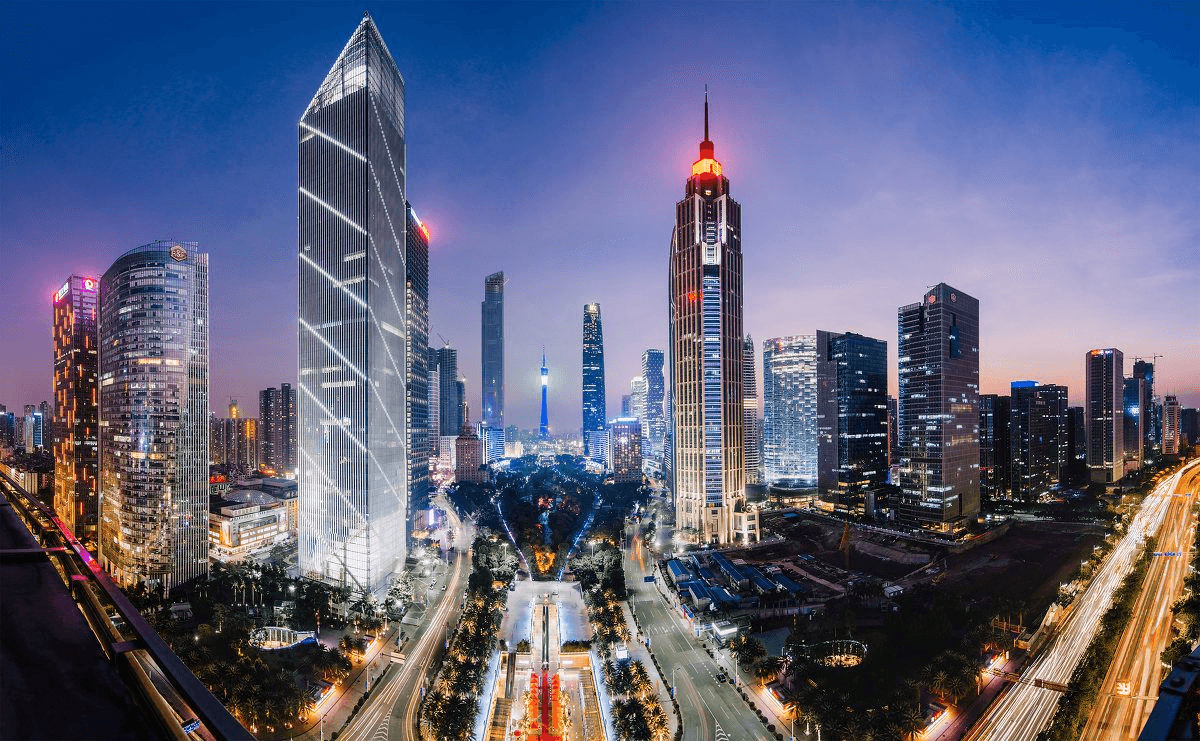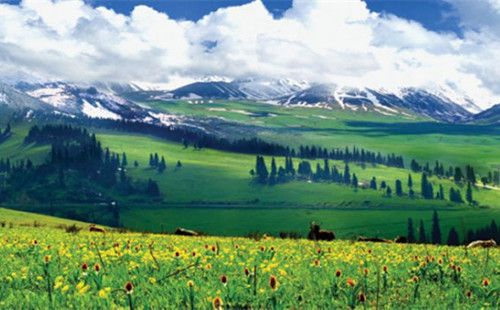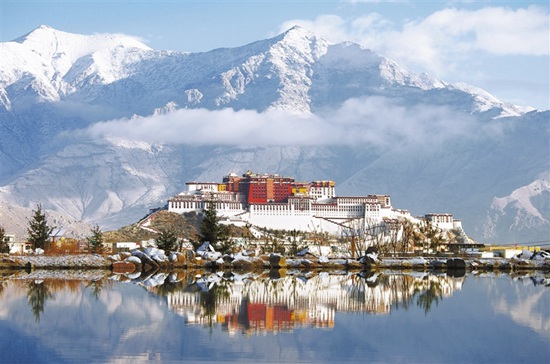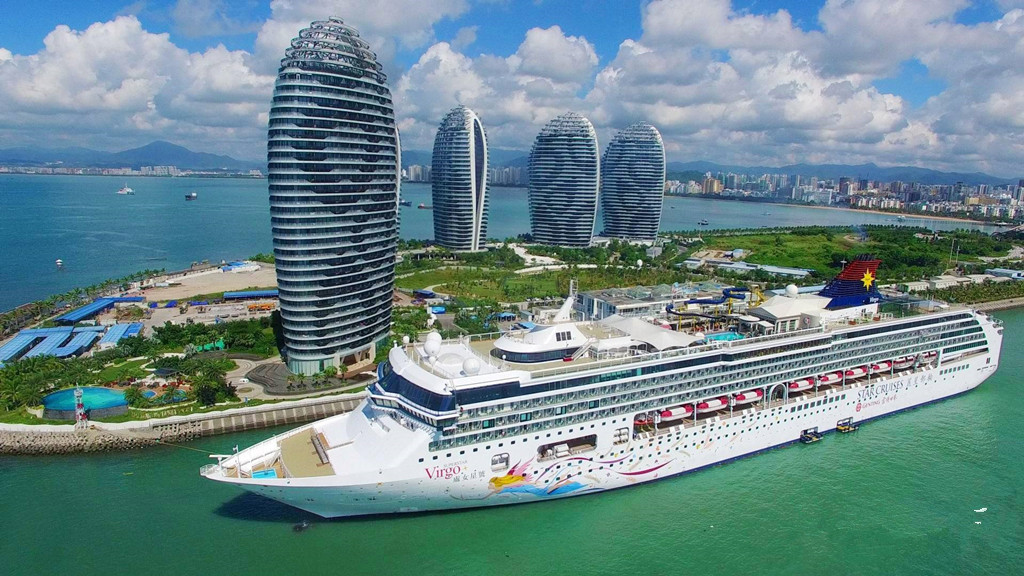China Travel Guide
-- A Storytelling Style WebGIS
China, officially the People's Republic of China (PRC), is a country in East Asia and the world's most populous country, with a population of around 1.404 billion. Covering approximately 9,600,000 square kilometers (3,700,000 sq mi), it is the third- or fourth-largest country by total area. Governed by the Communist Party of China, the state exercises jurisdiction over 22 provinces, five autonomous regions, four direct-controlled municipalities (Beijing, Tianjin, Shanghai, and Chongqing), and the special administrative regions of Hong Kong and Macau.
China has thirty-four provincial-level administrative units covering seven geographical regions. In the north, there are Beijing, the capital, Tianjin Municipality and the other three provinces. Heilongjiang, Jilin and Liaoning are the three provinces in the northeastern part that have chilly winters. In the east, including six provinces and Shanghai City, mainly covers the developed eastern coastal area. Southern areas are subtropical and is comprised of three provinces and Hong Kong, Macau, Taiwan. The traditional Cantonese culture began in this region has been a highlight of Chinese culture until now.
Southwest area has four provinces and one city located on the Qinghai-Tibet Plateau, Yunnan-Guizhou Plateau and Sichuan Basin. A number of ethnic groups inhabit this region. In the Northwest, which is inland and has the most complicated landform, is composed of five provinces, ready to offer an explorative China vacation. Also, it is the birthplace of the long history of the nation along the Yellow River. Henan, Hubei and Hunan are in the Central part which serve as transportation hubs both on land and water.
Beijing
Beijing, Jing for short, is a metropolis in northern China and the capital of China. Lying 70 mi (102 km) west of Bohai Sea, it borders Hebei Province to the north, west, south, and for a small section in the east and Tianjin to the southeast. This city is a major transportation hub, with dozens of railways, roads and motorways passing through the city. It is also the destination of many international flights arriving in China. It is regarded as the political, educational, and cultural center of China.
With a history of more than 3,000 years, it has been an integral part of China's history. There is scarcely a major building that doesn't have at least some national historical significance. Being the capital of China for about 850 years, it is one of the Four Great Ancient Capitals of China, offering China's most wonderful array of attractions. No other city in the nation attracts more travelers.
Seven hundred yeas ago, amazed by his unbelievable description of China, people asked Marco Polo whether his stories were true. He answered: What I have told you was not even half of what I saw. Actually, what was mentioned above is only a fraction of this city that awaits visitors from all over the world.

Shanghai
Shanghai, Hu for short, is a renowned international metropolis drawing more and more attention from all over the world. Situated on the estuary of Yangtze River, it serves as the most influential economic, financial, international trade, and cultural center in East China. Also it is a popular travel destination for visitors to sense the pulsating development of the country.
In addition to its modernization, the city's multicultural flair endows it with a unique glamour. Here, one finds the perfect blend of cultures, the modern and the traditional , and the western and the oriental.
New skyscrapers and old Shikumen together draw the skyline of the city. Western customs and Chinese traditions intertwined and formed the city's culture, making a visitor's stay memorable.

Guangzhou
 Guangzhou (Canton), a prosperous metropolis full of vigor, is the capital city of Guangdong Province located along the south coastline of China. Being an excellent port on
the Pearl River navigable to the South China Sea, and with fast accessibility to Hong Kong and Macau, the city serves as the political, economic, scientific, educational and cultural center in Guangdong area. Being the first cities
benefited from the Reform and Opening Up policy since 1978, the city acts as the pioneer of the economic development of the country, with numerous enterprises, which offer many job opportunities and make the city a heavily populated
area. Guangzhou is especially prosperous in commerce, tourism, dining, finance and real estate. For travelers, the city shows much attraction through its famous sights such as the Five Ram Statue in Yuexiu Park, Pearl River and
White Cloud Mountain.
Guangzhou (Canton), a prosperous metropolis full of vigor, is the capital city of Guangdong Province located along the south coastline of China. Being an excellent port on
the Pearl River navigable to the South China Sea, and with fast accessibility to Hong Kong and Macau, the city serves as the political, economic, scientific, educational and cultural center in Guangdong area. Being the first cities
benefited from the Reform and Opening Up policy since 1978, the city acts as the pioneer of the economic development of the country, with numerous enterprises, which offer many job opportunities and make the city a heavily populated
area. Guangzhou is especially prosperous in commerce, tourism, dining, finance and real estate. For travelers, the city shows much attraction through its famous sights such as the Five Ram Statue in Yuexiu Park, Pearl River and
White Cloud Mountain.
Guangzhou, the south gate of China, has a satisfying transport system radiating to the whole country and even the world. It has direct flights with Los Angeles of US, Vancouver of Canada, London of UK, Paris of France, Amsterdam of the Netherlands, Sydney and Melbourne in Australia, Singapore, Kuala Lumpur of Malaysia, Bangkok of Thailand, and many other Asian destinations. If you are already within China, a wide range of vehicles can facilitate your trip to and from the city, including the planes, trains, long-distance buses and ships. The urban transportation is generally good due to the orderly planning roads and the developed city-buses, taxis and subways.
Chengdu
Chengdu, the capital of China's southwest Sichuan Province, is famed for being the home of cute giant pandas. Located in the west of Sichuan Basin and in the center of Chengdu Plain, the city covers a total area of 12.3 thousand square kilometres (4,749 square miles) with a population of over 11 million.
Benefiting from Dujiangyan Irrigation Project which was constructed in 256 B.C., Sichuan Province is reputed as the Heavenly State, Tian Fu Zhi Guo in Chinese, literally a place richly endowed with natural resources. Chengdu, as the capital, is extremely productive. The Min and Tuo Rivers, two branches of the Yangtze River, connected to 40 other rivers, supply an irrigation area of more than 700 square kilometres (270.27 square miles) with 150-180 million kilowatts of water. Consisting of abundant mineral resources, the land is extremely fertile.

Urumqi
 Urumqi, the capital of Xinjiang Uygur Autonomous Region in northwest China, is just like a piece of emerald embedded at the foot of the Tianshan Mountains. As home to 49 minority
ethnic groups, this graceful prairie city is an important stop along the ancient Silk Road, leading to Central Asia and even as far as Europe.
Urumqi, the capital of Xinjiang Uygur Autonomous Region in northwest China, is just like a piece of emerald embedded at the foot of the Tianshan Mountains. As home to 49 minority
ethnic groups, this graceful prairie city is an important stop along the ancient Silk Road, leading to Central Asia and even as far as Europe.
The city lies in the shadow of the lofty ice-capped Bogda Peak with vast Salt Lake to the east, rolling pine-covered Southern Hill to the south, and alternating fields and sand dunes of Zunggar Basin to the northwest. With shorter spring and autumn but longer winter and summer, May to October is the golden season for travel, when flowers are in full bloom and the fruits, like melons and grape, are ripe with fragrance. The 2 hours' time difference between Xinjiang and Beijing lead to local working time starting from 9:30 or 10:00. The temperature varies widely between day and night. Considering this, you're advised to set out on your travels around noon each day.
Lhasa
 Lhasa is the capital city and center of administration for the Tibet Autonomous Region of China, and lies in the south-central area of the Tibetan plateau. At an altitude of
3,656 meters above sea level, it is the world’s highest capital city, and the center of the Tibetan culture and religion.
Lhasa is the capital city and center of administration for the Tibet Autonomous Region of China, and lies in the south-central area of the Tibetan plateau. At an altitude of
3,656 meters above sea level, it is the world’s highest capital city, and the center of the Tibetan culture and religion.
In the Tibetan language, Lhasa means the Holy Land or the Buddha Land. It is the center of Tibet's politics, economy and culture. The city has also been appointed as one of the 24 historical and cultural cities of China. The splendor and grandeur of the Potala Palace remains a world-famous symbol of the enigmatic power of politics and religion in this region.
The center of the Tibetan Empire for more than 300 years, and the heart of the Tibetan Buddhist religion for more than a millennium, Lhasa is a city of delights and wonders that will amaze and astound you. Literally meaning “place of the gods”, the city is also known as the City of Sunshine, and gets more than 8 hours of sunshine per day on average throughout the year.
Sanya
 Sanya is situated on the southernmost tip of Hainan Province. The location between 180°9′ and 18°37′ latitude gives it the tropical monsoon climate. Covering an area of 1919.58
square kilometers (about 741 square miles) with 209.1 kilometers (about 130 miles) long coastline, this coastal city has many natural advantages. Possessing a number of excellent harbors, Sanya is an important port for import and
export of trade with foreign countries. Therefore, it is also named the 'South Gate of China' to stress its importance while it plays a vital role in the life of the southern part of China in areas of the economy and politics to
transportation.
Sanya is situated on the southernmost tip of Hainan Province. The location between 180°9′ and 18°37′ latitude gives it the tropical monsoon climate. Covering an area of 1919.58
square kilometers (about 741 square miles) with 209.1 kilometers (about 130 miles) long coastline, this coastal city has many natural advantages. Possessing a number of excellent harbors, Sanya is an important port for import and
export of trade with foreign countries. Therefore, it is also named the 'South Gate of China' to stress its importance while it plays a vital role in the life of the southern part of China in areas of the economy and politics to
transportation.
For most travelers, Sanya is a noted tourist resort with mountains, rivers and the best seaview. The favorable climate is hot in summer but warm in the three other seasons so attracting large numbers of followers from both home and abroad every year. The whole city is related to the sea. Here you can enjoy a unique tropical oceanic landscape that is totally different from the other provinces of China. Sanya Bay, Dadonghai and Yalong Bay all golden seaboards of Sanya, are some of the first choices for visitors to spend their holidays. Instead of a busy and exhausting journey, you can relax totally here by strolling along the beaches and breathing the fresh air. If you are an enthusiast of exciting water activities, Wuzhizhou Island is your place to challenge the mysterious and changing sea. Additionally more than 20 ethnic groups including Han, Li, Miao, Hui inhabit there becoming a wonderful place to appreciate the various cultures of China. In Binglanggu Li & Miao Cultural Heritage Park and Yanoda Rainforest Cultural Tourism Zone, you can fully experience local ethnic customs.